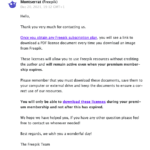I wanted to share this insight for those who may need a bit of help
Given my background, a few incidents have come up during the Medium posting adventures that I’d like to clear up. I’m not new to the copyright game, as I am and have been a digital and graphic designer for almost 20 years now. So I have been through the beautiful transition from print to digital. It’s been an insightful experience. My line of work calls me to be very vigilant of copyright laws when using images for publications, client proposals and anything we print or showcase online. Unfortunately, there are a lot of different rules, and it vastly depends on what image library you are subscribed to or use for free. Free images to use, where you credit the photographer, differ from actual purchased images from a subscription. This one has various hits and misses, and I’d like to clear that up here. I use both iStock, and Freepik for my visuals. I find that images available on this platform sometimes do not best suit my message. Both of the subscriptions I use require a monthly fee.
How to check your image purchase rights
Always look on your provider’s website for a copyright link for more in-depth information. This link is usually visible in the footer of a website. Unfortunately, some websites (like Freepik) put a whole bunch of confusing information on their website. It took me hours to sort through to find related answers. Rather than waste time and become frustrated, I would email the company to ask the question directly.
The great news is I did find this:
This is the information I found on their website. This is a straight-up copy and paste below:
“Please remember that the copyright of Freepik resources belongs to its author (Freepik), so you won’t be able to register an image that includes any of our resources. Also, if you are a free user, the attribution needs to be added to the product you create, even for personal use. As a premium member, you don’t need to credit the author when using the resources, but please remember to download the licenses”.
This proves my point of not constantly crediting the photographer because it’s not a free image. Instead, I have purchased it and can use it for my enjoyment (for the duration of my membership). I decided to write them an email anyway, just in case I missed or interpreted their terms and conditions in the wrong way. It’s always a good idea to double or triple-check if someone points the finger. So here is what I received this morning:

Authors screenshot from Freepik’s FAQ request — email.
iStock, on the other hand, makes it more accessible
This is the information I found on their website. This is a straight-up copy and pastes below:
Standard licenses
“Every file downloaded on iStock comes with a standard license that lets you use it in a wide variety of projects, including advertising, websites, blogs, presentations, publications, video productions, podcasts, and more. All of our files are licensed on a royalty-free basis, which means you only pay for the initial download of a file and don’t have to pay the creator a royalty each time you use it. There is no expiration date on your rights to use files downloaded during your subscription period. Files licensed with credits can also be used in as many projects you like for as long as you want. No matter how you pay for it, every file comes with a Legal Guarantee that protects you for up to $10,000″.
What you download can be used for personal, business or commercial purposes. This is great for what we are doing on this platform — but also doubly good if you need to do some client paid work (there is a limit to how many print versions you can have before requiring an extended licence). When using a standard licensed image for advertising material, magazines, and product packaging, you can get into hot water. When sharing digital assets with a client with a standard licensed image stands as a breach of copyright. For example, If I created a social media post for the business I work for, but an external client wanted to use it for their own social media channel — that’s deemed as sharing a file. These types of assets require an extended licence. That can vary according to your chosen image library. These are just some of the many things that can give you a headache. If all else fails, and you don’t know the answer, pick up the phone or send an email. These guys are both pretty good at getting back to you within 24 hours.
Take away
The only thing you need to know is this: One: If the image is free, you have to credit the photographer. Do so for the person kind enough to share the photo and show gratitude that their picture is worth putting on your website or post. Two: If you have a paid subscription with an image library, you don’t have to credit the photographer. It’s always good to mention that you got it from a particular library (so that you are covered). I definitely should have written is a purchased image — naughty strike for me! See the example here: How One Nerve Can Stop You From Losing Weight And Mess With Your StomachIf you are finding it hard to lose weight, you need to know about this nervemedium.comThree: If you are lazy like me, send them an email and give them 24 hours. It’s better to be safe with a legitimate email than to be chased by lawyers. The fine for getting busted is pretty hefty. Four: Don’t let a client get a free lunch. It’s our job to provide the best advice according to their needs. Using images from the internet on any client work is forbidden — and a client should be aware of the consequences. Don’t be negligent. I hope this helps everyone with a low hanging fruit copyright challenge.
Two: If you have a paid subscription with an image library, you don’t have to credit the photographer. It’s always good to mention that you got it from a particular library (so that you are covered). I definitely should have written is a purchased image — naughty strike for me! See the example here: How One Nerve Can Stop You From Losing Weight And Mess With Your StomachIf you are finding it hard to lose weight, you need to know about this nervemedium.comThree: If you are lazy like me, send them an email and give them 24 hours. It’s better to be safe with a legitimate email than to be chased by lawyers. The fine for getting busted is pretty hefty. Four: Don’t let a client get a free lunch. It’s our job to provide the best advice according to their needs. Using images from the internet on any client work is forbidden — and a client should be aware of the consequences. Don’t be negligent. I hope this helps everyone with a low hanging fruit copyright challenge.
If you would like to read more articles like this or start writing your own, please sign up via my link. I’d love to see you on the other side.
Sign up here for your medium subscription
I get a portion from your monthly fee at no extra cost to you and it will go a long way in supporting me as a writer.
